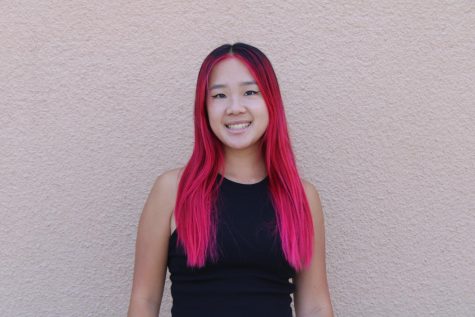April 2021 Marks the 25th National Poetry Month
May 24, 2021
Poetry often is an expression of a multitude of feelings and ideas through imagery, rhythm, symbolism, and sometimes even visual supplements. While you may have been exposed to poems by famous poets like William Shakespeare, Walt Whitman, or Emily Dickinson, modern-day poetry extends beyond traditional written poetry, and anyone can partake in it. This year, April marked the 25th National Poetry Month, a celebration of the literary artistry of poetry and songwriting.
Although poetry is often associated with the likes of Robert Frost or Oscar Wilde, the art form is becoming increasingly popular among a younger audience. In fact, many UHS students partake in the art of writing poetry.
“I write almost every day,” sophomore Allison van Erp said. “Sometimes it’s just sitting down with a pen and paper and letting my thoughts flow, or picking up the nearest instrument and getting inspiration from a few chords. I have learned that the first draft is never the final draft and often leave my poems unfinished. That’s the beauty of poetry—there is no right or wrong way.”
Many like van Erp enjoy the versatility of poetry. Although many forms of literature and art are rigidly structured, poems provide a sense of fluidity with its rhythm and flow.
“There are so many different kinds of poetry, and it’s a really flexible art form,” van Erp said. “While essays, stories, and other texts are much more direct in their messages, styles, and structures, poetry is much more open to interpretation.”
Due to the ongoing stress of school, work, and life during a pandemic, many have turned to poetry as a source of calm and relaxation during an otherwise trying year.
“Poetry is important to me as a medium of self-expression and creativity,” sophomore Nicole Chen said. “It’s really cathartic and relieves any overwhelming feelings that I have.”
Poetry, like any other art form, is a unique experience for each individual. Some students enjoy the creative process of conceptualizing a poem.
“My primary inspiration is music—whether it’s the lyrics, the soundscape, or the playlists,” Chen said. “I’ve gotten so many ideas from making Spotify playlists because I really love cultivating whole ideas complete with a picture, set of songs, and piece of writing. I really like adjusting the speed of the poem and format as the piece unfolds, kind of [like] pulling back [and] forth in a rubato rhythm.”
In addition to traditional written poetry, songwriting has also become a popular medium for writing poetry. Although mainstream poetry rarely acknowledges songwriting as a form of poetry, songwriting is in many ways one of the most expressive literary arts.
“Songwriting is important to me because it’s an outlet,” freshman and musician Milla De Villiers said. “I get to write all my feelings into a song and let them go. The best feeling is when I come up with a really good lyric line or melody. For me, the melodies come naturally as I am more musically inclined.”
The songwriting process, much like writing poetry, involves heavy amounts of conceptualization. Writers must take rhythm, as well as melody, key, and intonation, into account.
“I often try to come up with something new or add on to something that already exists,” De Villiers said. “Creativity comes in bursts, and some days I can write a song in 15 minutes, while on other days it’s harder to think of something. I usually start by coming up with a chord progression, then a melody, and finally the lyrics.”
Through many forms of poetry such as free form poetry and songwriting, many students have found an important connection between artistic creation and emotion.
“[Poetry] is something I take pride in and enjoy, [and] I also gain a sense of romanticization of my own life—as if I belong to this piece of prose that so lyrically depicts things,” Chen said.





